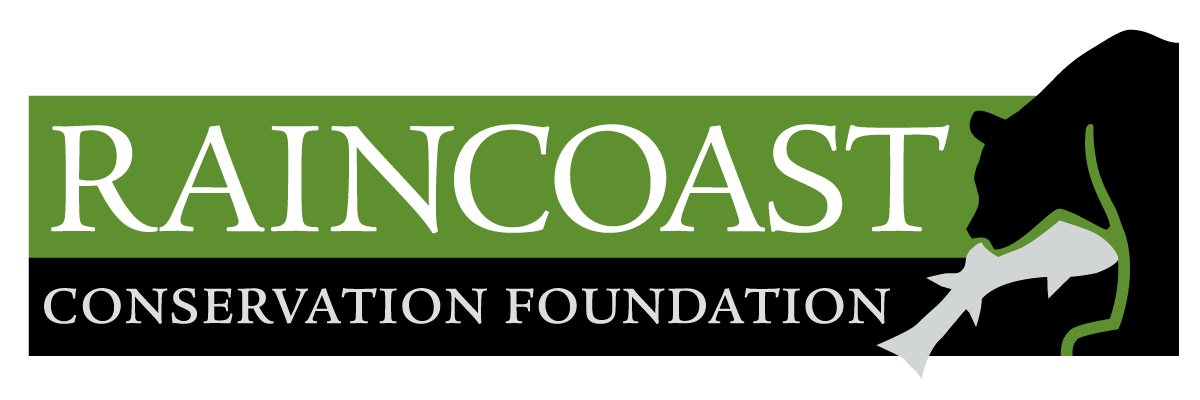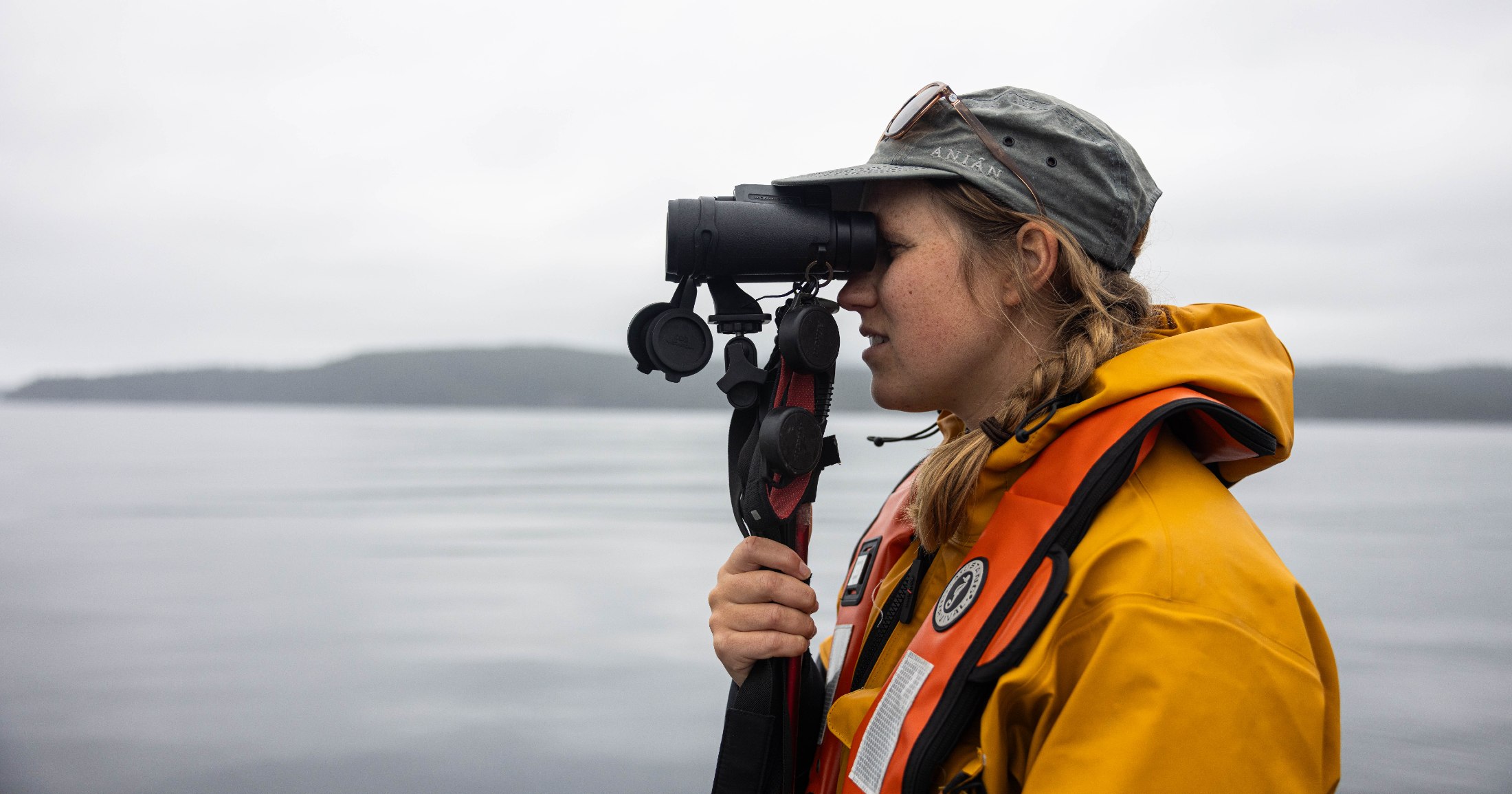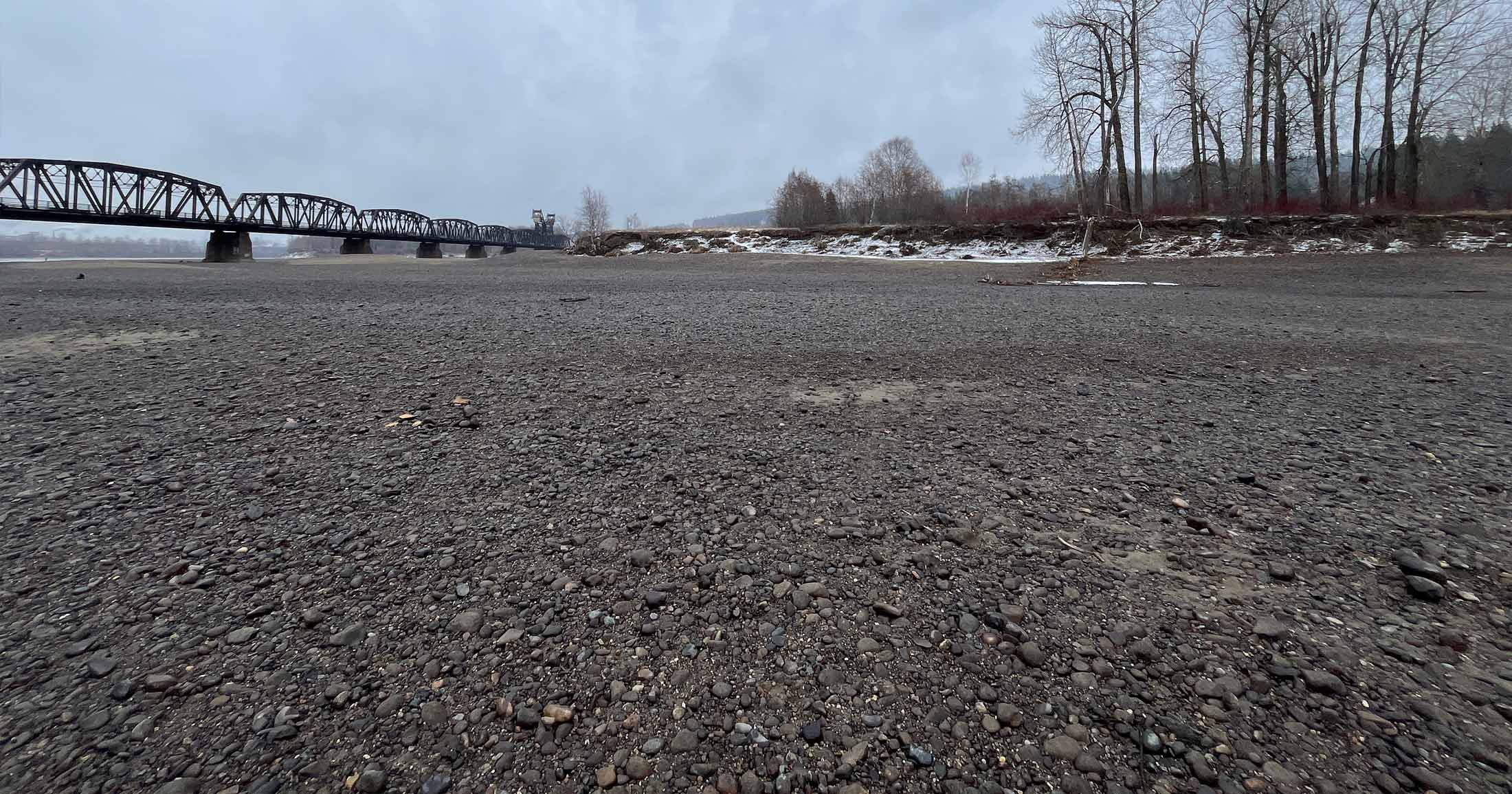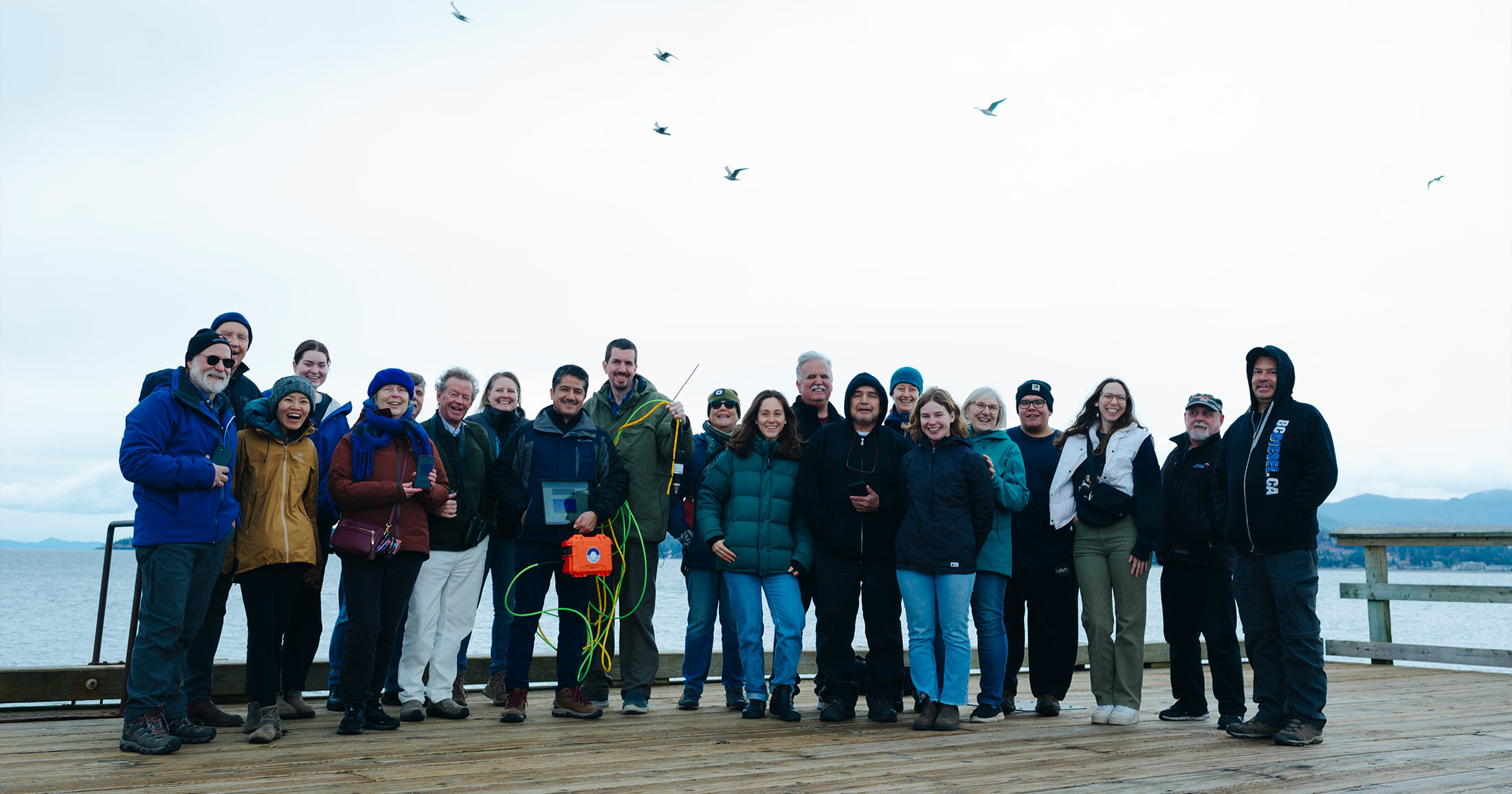Journal of the Wolf Project – June 2002
 After a long winter analyzing last year’s samples and data, our team is happy to be back in the footsteps of rainforest wolves. This spring was good to us – the “wolfiest ” session to date. We saw 17 different wolves from five different packs, and many of them several times.
After a long winter analyzing last year’s samples and data, our team is happy to be back in the footsteps of rainforest wolves. This spring was good to us – the “wolfiest ” session to date. We saw 17 different wolves from five different packs, and many of them several times.
Each day we come across countless coastal treasures – black bear, river otter, mink, bald eagle, falcon, killer whales, white sided dolphins, cougar and grizzly bear – all surrounded by spectacular ancient stands of rainforest.
But it is the wolves, the chance of seeing them, that give us that extra bit of motivation we need on wet and difficult days. Without question, this season’s highlight has been seeing “Pup Sitter” again. We christened him as such because last year he was the designated protector of the pups while the adults were out hunting. Every wolf has its place in the pack.
Our spring sampling session is now complete, and we have nearly doubled the study area from last year. The Rainforest Wolf Project now encompasses ten islands plus a large mainland area, totaling over 2500-km2 of Heiltsuk First Nations traditional territory.
In five weeks, we have collected over 400 scat samples. These samples will tell us what the wolves have been eating during the late winter and spring. We will do the same mid summer and again in the fall when salmon come home to spawn. In this way we can track the diet of wolves throughout most of the year, and we can see just how important resources like deer and salmon are to wolves during the different seasons.
A sample of each scat is sent to the genetics lab at UCLA where pilot work is underway in identifying individual wolves. This same seasonal sampling over several years can inform us about how much land individuals and packs need to live their lives – all without capturing or otherwise harassing wolves. We figure they need a lot of land, likely swimming among landmasses to feed themselves and their family.
This year we have added an important new component to the project: assessing areas for relative densities of deer. We count their “pellet groups” (scat piles) along roughly 130 km of straight line and uphill transects. Carrying out this kind of surveying, especially in this topographically complex old growth area, is incredibly challenging but rewarding.
One event that stands out for us this season is the re-emergence of “Pup Sitter”. He broke his leg last year and limps around on three legs, hence the nickname. We had not seen him since last fall and we were concerned about how he would make it through the long winter. It was a thrill to find him looking healthy, albeit soaked and disheveled standing stoically on a rocky outcrop. After watching us for a couple minutes, he disappeared into the giant trees that guard the shoreline and the rainforest inhabitants. We slowly motored our boat around the point to see if his pack-mates were nearby. To our surprise, there he was, swimming the 100 meter channel between two islands. Comically, a seal was making the journey in the opposite direction only metres away. The two did not stop to chat. Upon reaching shore, he shook off and disappeared into the thick vegetation that feeds and shelters deer, likely what the pack would feed on that evening. We left beaming like little kids.
We have yet to discover the den sites of the packs we are studying, but stay tuned. It’s best that we wait until later in the summer – by that time, the pups will be more mobile and the adults less sensitive to us roaming around the area. These sites are important to identify for they tell us of the forest structure wolves select during this important part of the year.
Chris Darimont
Raincoast Wolf Project Coordinator
Support our mobile lab, Tracker!
Our new mobile lab will enable the Healthy Waters Program to deliver capacity, learning, and training to watershed-based communities. We need your support to convert the vehicle and equip it with lab instrumentation. This will allow us to deliver insight into pollutants of concern in local watersheds, and contribute to solution-oriented practices that protect and restore fish habitat.









